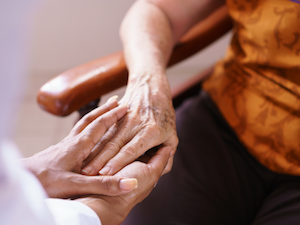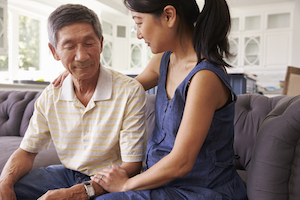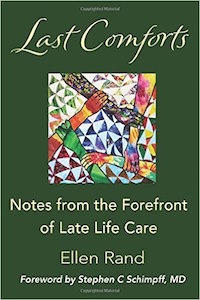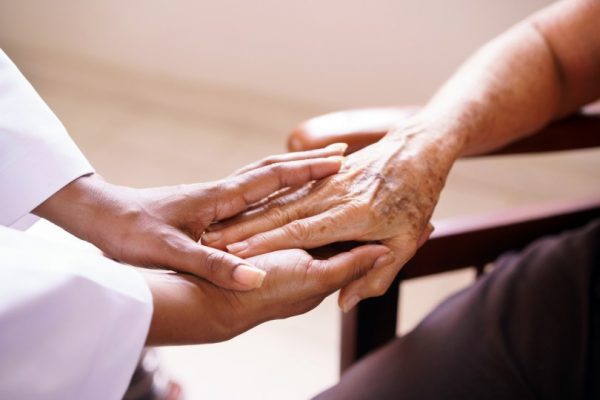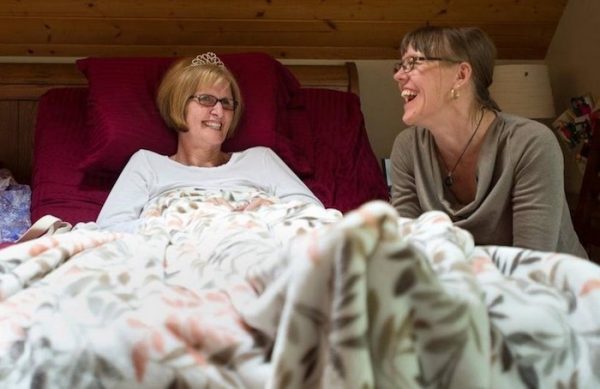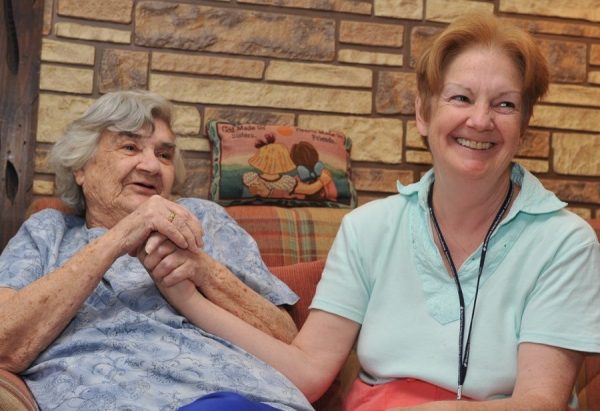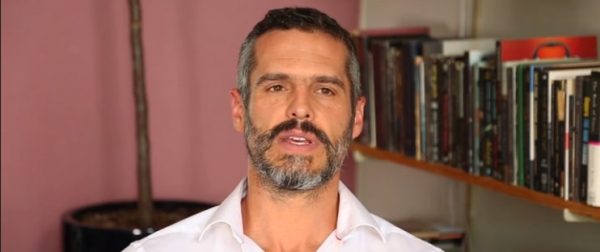An exclusive excerpt from Casey Jarman’s new book, “Death: An Oral History.”
By Casey Jarman
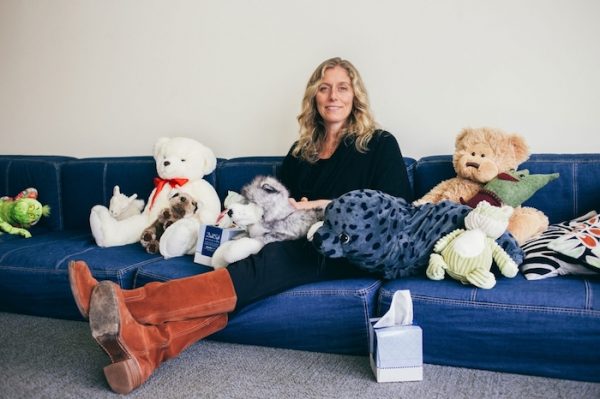
[J]ana DeCristofaro may have the toughest job in Portland. Each morning, she drives to a large Craftsman house a block off Southeast Foster Road, and goes to work among the dead.
To be precise, DeCristofaro makes her living talking to survivors: bereaved children and teenagers. She’s the director of children’s grief services at the Dougy Center for Grieving Children & Families, a nationally renowned center for counseling kids in Southeast Portland’s Creston-Kenilworth neighborhood.
That means DeCristofaro, 42, spends much of her days starting the kinds of conversations most people scramble to avoid. She sits with children whose parents have recently died, and asks them what they miss most about their lost loved ones. She starts group conversations between grieving teenagers. And she advises parents about how to break the worst possible news to their kids.
DeCristofaro’s job is haunting and difficult. But it isn’t unique. When Casey Jarman began writing a book of interviews about people who have confronted death, he found many Portlanders who confront mortality on a daily basis.
“Call it exposure therapy,” Jarman writes. “If you have a fear of heights, spend some time in the mountains. If you’re scared of death, what can you do, short of dying? You can spend a year of your life talking about it.”
Jarman, co-founder of Party Damage Records and a former WW music editor, spoke to hospice workers, philosophers and Oregon’s former death-row executioner. His book, Death: An Oral History, comes out next week.
Among the people he interviewed are two Portland women whose job is digging in the roots of grief. In the following pages, excerpted from the much longer conversations in Jarman’s book, you’ll meet DeCristofaro and Holly Pruett, who arranges and officiates DIY memorial services.
These women confront on a daily basis the most basic and frightening fact of our existence: that it ends. But that’s just where these conversations start. —Aaron Mesh
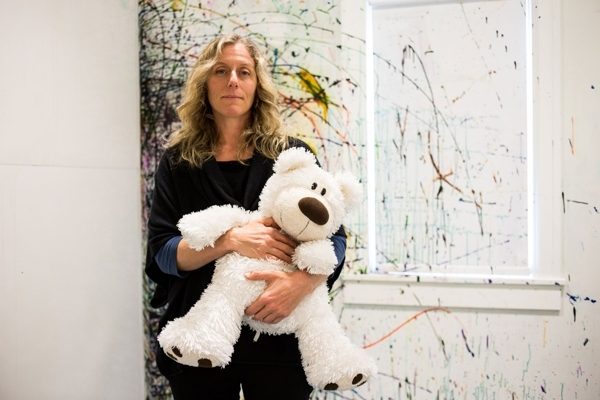
The Dougy Center for Grieving Children & Families is a low-key place, despite its austere name.
One might expect a woman with the title of coordinator of children’s grief services to be relentlessly serious or walk on eggshells. Jana DeCristofaro, though, is unfussy and direct.
This is a place where people come to talk. Kids talk to other kids. Teens talk to other teens. Parents talk to parents. Some of that talking is about death—the center helps people who have lost parents and siblings—and some of it is just talking. More than 30,000 children and teens have taken advantage of the Dougy Center’s services since it opened in 1982, and DeCristofaro has talked, laughed and cried with a lot of them in the past 15 years.
I graduated with my Master of Social Work degree in 2001. I got a job doing research, and over the course of the year, I was feeling very unfulfilled with that work. A friend of mine was like, “You know, you should check out this place. I don’t know, it’s called the Doughy Center or Dooey Center? There are kids who go there, they’re sad. They have teddy bears and they cry.”
I was like, “What are you talking about?”
I looked them up, and they were having volunteer training a few weeks later. Our volunteer trainings tend to have really long waitlists, but I happened to write in just after somebody had canceled. They invited me to come to the training. It was held at a small building in North Portland. It was dark and gloomy, in a basement, and we were all squished in there, sitting on colored pillows. I thought, “What have I gotten myself into?”
The Dougy Center was the first program in the country—I think the world, too—to start working with grieving kids in a peer support model. The whole idea is bringing kids together of a similar age who have a common experience of the death of a parent, sibling, primary caregiver, or—in the case of teens—a close friend or a cousin.
We have over 30 groups for kids and teens that are split up by ages: 3 to 5, 4 to 8, 6 to 12, 11 to 14, and 13 to 18.
The Dougy Center was started by a woman named Bev Chappell. She’d had a long-standing connection with Elisabeth Kübler-Ross, a pioneer of the death and dying field back in the ’60s and ’70s. A 13-year-old boy named Dougy Turno, who had an inoperable brain tumor, wrote to Kübler-Ross and said, basically, “Hey, how come kids get cancer? And why do we die?” She wrote him back, and it was a long, colorful, illustrated response.
In the late ’70s, Dougy came to Portland for some experimental treatment, so Elisabeth reached out to Bev Chappell, who lived here, and was like, “Hey, would you meet up with the family, help them get settled?” Bev did that, and she started visiting Dougy at the hospital. She looked around and noticed that, one, the medical community was not down with telling kids what was going on. Because back in the day, the approach was not to tell them.
But Bev hung out with them long enough to realize that the kids knew. She heard them talking to each other and starting conversations about things like: Do you think you’re going to live long enough to go to prom? Have you kissed a girl? Do you think you’ll get a chance to do that? What do you think it’s like where we’re going? You know, all the stuff that the kids talk about in group. They were doing it without adults facilitating the conversations.
That’s where she got the idea to start a center. She hosted the first group in her basement, and I think there were four boys who came to that group, and from there it has just grown. She’s still around. She lives in East Portland, and was just at our benefit gala a couple of weeks ago. Now we have 500 children and teens coming through the doors every month at three locations.
When the teens first come in, you can often tell they do not want to be here. I’m like, “Anyone willing to admit you’ve been dragged here against your will?” In this last orientation, all five teens raised their hands. I was like, “Wow, I’ve got my work cut out for me.” But just acknowledging that, it opens up the energy in the room in such a dramatic way. I tell them, “I’m not here to convince you. I won’t take it personally if you decide not to come back. My job is to try and show you everything, what we are and what we’re not.”
It doesn’t work too well to force people to talk about this stuff against their will. One time, I asked a teen group, “How many people got something for coming to the Dougy Center?” It was like, “Yeah, I got out of school.” One kid said, “I got a new MacBook.” Everyone was like, “Damn it! We should have asked for more.” I thought I was going to start a revolt. It doesn’t take long, though, for most of them to realize we aren’t in the business of making them do, say, or think anything. They get comfortable being with other grieving teens pretty quickly.
Once I had a group of teens talking about how the death they experienced has affected what they wanted to do with their lives in the future. Many of them were like, “I want to honor my parents by going to their alma mater,” or “I really want to become a nurse because the nurses helped my brother so much when he was sick.”
There were a lot of those sort of more expected answers, and then there were some kids who said, “I hate doing well at things now. I actually don’t want to do well. I don’t want to have any success with my life, because to do it without my person there is too devastating. I’d rather feel like I haven’t done anything.” I thought, “Wow, what a hole to be in.” I never considered that moving forward without this person and having success could mean leaving them behind. That really opened my mind.
Anytime somebody says something that surprises me, I always try to remember that there could be someone else in the group going through something similar. My job as a group facilitator, if I’m doing a good job at it, is to speak to what’s not being spoken about in the group. Many times there’s a sense of, “Yeah, yeah, we all know this is true.” And I ask, “Who’s had an opposite experience?”
With the younger kids, I think about one boy in particular. We sat quietly and we were talking, and he had so many questions—not for me, necessarily, just questions. He was talking about how it didn’t make any sense to him. His mom had died, and he was like, “You know, people say that when your person dies, they are looking out for you, they are watching you from above, and making sure everything’s OK. Our roof sprung a leak last night, and, I don’t know, don’t you think my mom in heaven looking out for me would make sure the roof didn’t do that?”
I was like, “Hmm. That’s a really interesting question. What do you think?” And then it just went on. We talked for 20 minutes. There were so many questions this little boy was really wrestling with—answers he’d been given from adults in his life that were very black and white. He was like, “That doesn’t make any sense to me.” He wasn’t having an opportunity to really muck around in the gray areas. “Well, they say when somebody goes to heaven, they never look back because they’re so happy to be in heaven, but don’t you think if you were a mom, you’d miss your kids?” Here’s a little boy thinking his mom doesn’t miss him.
That was really powerful for me because oftentimes we think that, developmentally, these kids are concrete thinkers and we tell them concrete answers. But many times they are very wise and have some really deep philosophical questions.
One little kid, their person had died by suicide, and they were like, “I’m just so worried. I hear when people die by suicide, they go…” and he pointed down to the ground with his finger. He’s like, “But I really think they went…” and he pointed up. Just for him to be able to say, “This doesn’t work for me,” was pretty amazing.
Some people will ask, “Do you have a really hard time now? Thinking that everyone’s going to die?” I tell them I’ve always had that. Long before I started working here. Working here just solidified my anxiety a bit, and perhaps enhanced it.
I also accept the fact that when I go anywhere, I always have at least two or three stories about how someone has died doing what I’m about to do. That just happens—it’s just the way it is. Like, this river is so beautiful, but there was that brother who fell off that rock over there, and then there was the guy who went mountain biking and hit a pothole and cracked his head open. But I came that way before I even had this job. My mom’s been like that my whole life: “Don’t do that, you’ll die.” I already know all the ways you could die, but now I have particular stories that match up with them. I have to spend a lot of time being, like, “Yes, and we’re going to still do that.”
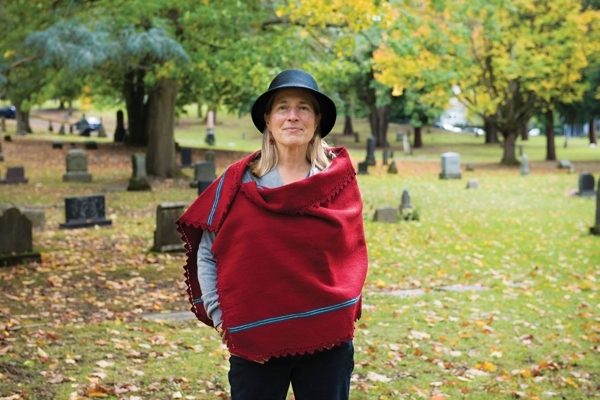
Holly Pruett
[H]olly Pruett officiates ceremonies from cradle to grave—think baby blessings, weddings, retirement rituals, and so on—but her interest in funeral rites has made her one of the central figures of Portland’s burgeoning DIY death scene. She went into business for herself after two decades as a political consultant and public relations director. (Her résumé includes helping form Basic Rights Oregon.)
I have always looked at cherished social conventions like weddings and funerals as old-fashioned relics. But I never spent much time thinking about what, if anything, they should be replaced with. That’s Pruett’s line of work. She is a certified Life-Cycle Celebrant, and while that term may elicit images of tree people wearing white dresses and daisy chains praising “the goddess,” Pruett is clear-eyed about the need for ritual in our lives.
A friend read in People magazine about a burial ground in South Carolina called Ramsey Creek Preserve, [where] people were buried in a natural wooded setting.
My friend thought, “If this is in People magazine, and it’s happening in South Carolina, why is it not happening in Oregon, the so-called green sustainability capital?”
When we got in touch with the national Green Burial Council, they said, “You know, there’s somebody else who’s expressed interest in your town.” It happened to be a woman who was a Life-Cycle Celebrant. I got together with her and asked, “What’s a Life-Cycle Celebrant?” When she described it, I was like, “Whoa.” It seemed to be a convergence of many of the things that I was interested in.
When I explain to people what a Life-Cycle Celebrant is, I often say it’s like a secular clergy person. Because not only can I officiate weddings—and, technically, I do have clerical credentials to do that—but I am there for people in the process of figuring out what ceremonies they need in their life.
Somewhere around that time, I realized that the most common form of human memorial, among a lot of people I’d come across, was no memorial. I slowly started to recognize that I was in a position to address some of this cultural vacuum.
All of the needs that organized religion and social rituals used to serve are still with us. It’s just that a lot of those forms have become archaic. Funerals are just a bad brand. A funeral director once said to me, “In the funeral chapel, you’ll often see a man gripping his wife’s arm, saying, ‘Don’t you dare waste our money on something like that for me.'” Because they see a retired clergy person mispronouncing the name of their best friend, and it’s like, what’s the point?
I’m coming to see that one of the most powerful roles I serve is that I’m typically the first person to meet the deceased after they’ve died.
I’m not a medium working metaphysically, but I am leading their loved ones through the memories and through the presence that is evoked through their stuff—a quilt they made, the letters they wrote, their emails, the impact that they had on others. Their legacy can be so much clearer to me, in a sense, because I’m coming to it fresh.
I hear things like, “I felt closer to my mother during the process of working with you than I did in the last months or years of her life.” Perhaps she was suffering from dementia. They’ve gone through their mom being sick and dying, and it’s still very raw, a very painful thing. Then they revisit, with me, the stories of their mom’s early life and how she became who she really was, and how everyone else saw her. It’s healing.
In one ceremony, the client generated a list of words—associations that reminded her of her mom. We printed them out on these really nice, blank business cards. We put them in one of her mom’s pocketbooks. She was a really sharp dresser and always known for having a pocketbook. During the memorial, a large family gathering, we passed the pocketbook around. Each person pulled out a card, and that word—in connection to that physical object—evoked her presence.
I met a young woman in her 30s who was diagnosed with stage IV lung cancer. She hired me to help put together her death plan. She wanted to spare her husband as many decisions as possible. I created a lengthy questionnaire for her to use to clarify her wishes. Some things were clear—like, she wanted to be cremated—some things weren’t.
Do you want to put together the playlist for the music at your memorial, or choose the food, or do you not want to? Are you planning a party, or is it more like this or that person should speak? I always say, with these planning questionnaires, just respond to those questions that really resonate with you. None of it is mandatory.
She was like, “How can I possibly answer these questions on my own?” She brought together her 10 closest friends from various parts of her life, told them there’d be pizza, and they talked about death. She selected a subset of my questions and invited me to observe.
What was phenomenal was that most of these friends hadn’t met each other. They were from different parts of her life. Very easily, the first time that they could have met would have been at her memorial or at her deathbed. Of course, they are all very bereaved about her diagnosis and her living with this, but societally, what kind of permission is there to talk about that and for her to say, “OK, I know I’m going to die, and I need you all to help me talk about that and to tell me what you think happens after we die?” It became, “I don’t know what I think, what do you think?”
It was like they were starting to do a workout together, you know? Because they’re going to have to train to hold this grief together for her.
My life has become heavily engaged in conversations about dying, death and grief. In my personal life, I’m at an age where many people who I personally care about are sick or dying, or coming to me with their bereavement. Of course, I have a professional practice of assisting people in memorials and home funerals. At times, I think, “What have I done to my life?”
This interest in rekindling ceremony could be the start of something much bigger, or it could easily become another self-help program. You can buy kits online for your divorce party—so much ritual has already been commodified. Think about a baby shower: How do you mark a baby coming or a wedding? It’s become all about the stuff that you buy, or these silly, giddy, frivolous activities. What about this threshold that these people are about to cross?
Most of us aren’t living in a way that says, “I belong to the world, the world needs me.” If we don’t celebrate people’s death, then they never really belonged to the bigger story.
Complete Article HERE!

